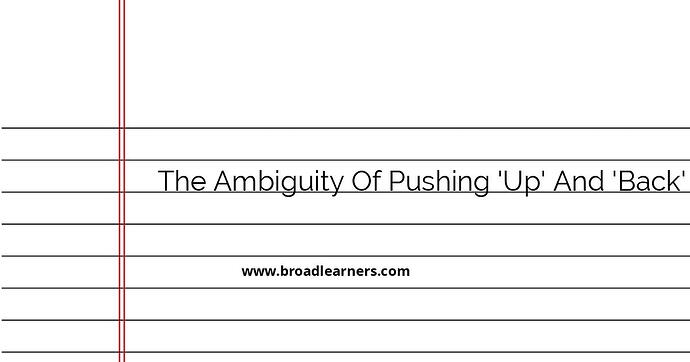Understanding the ambiguity of phrases like 'pushing up' and 'pushing back' can help in effective communication and clarity of instructions. These phrases can have different meanings based on the context in which they are used. Let's delve into the nuances of 'pushing up' and 'pushing back' to avoid confusion:
- Clarifying the ambiguity of 'pushing up' and 'pushing back' requires context-specific interpretation.
- It's essential to provide clear instructions when using phrases like 'pushing up' or 'pushing back' to prevent misunderstandings.
- Understanding the intention behind 'pushing up' or 'pushing back' is crucial for effective communication.
Now, let's explore the possible interpretations of 'pushing up' and 'pushing back' with examples:
1. Pushing Up
'Pushing up' can have various meanings depending on the situation. It could indicate increasing something, moving upward, or providing support. Here are some ways it can be interpreted:
- Pushing something upwards physically.
- Increasing the volume or level of something.
- Supporting or promoting a cause or idea.
Examples:
1. Push the table leg up to lock it in place.
2. Can you please push up the sound on the TV?
3. We need to push up our marketing efforts to reach more customers.
2. Pushing Back
'Pushing back' can also have several meanings depending on the context. It could signify resistance, delaying something, or expressing disagreement. Here are some interpretations:
- Resisting a physical force or pressure.
- Delaying a decision or action.
- Disagreeing or opposing a statement or idea.
Examples:
1. She pushed back against the door to keep it closed.
2. The team decided to push back the deadline to accommodate more testing.
3. The board members pushed back on the proposed budget increase.
By understanding the diverse interpretations of 'pushing up' and 'pushing back' in different contexts, you can avoid ambiguity and ensure clear communication in both personal and professional interactions.
Did I miss anything? Respond below
